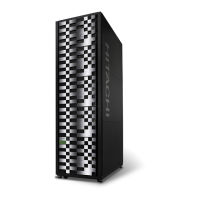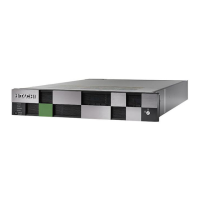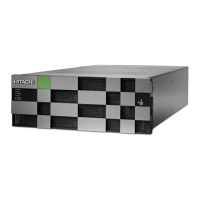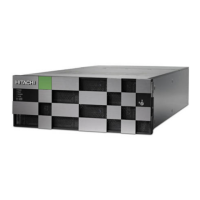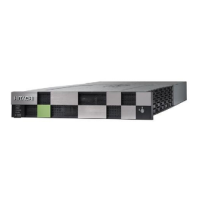Figure 10 Sample RAID 5 3D + 1P Layout (Data Plus Parity Stripe) (on page 65) sho
ws
RAID 5 data stripes mapped acr
oss four physical drives. Data and parity ar
e striped
acr
oss each drive in the array group. The logical devices (LDEVs) are dispersed evenly in
the array group, so that the performance of each LDEV within the array group is the
same. This gure also shows the parity chunks that are the Exclusive OR (XOR) of the
data chunks. The parity chunks and data chunks rotate after each stripe. The total data
in each stripe is 2304 blocks (768 blocks per chunk) for Open-systems data. Each of these
array groups can be congured as either 3390-x or OPEN-x logical devices. All LDEVs in
the array group must be the same format (3390-x or OPEN-x). For Open systems, each
LDEV is mapped to a SCSI address, so that it has a track identier (TID) and logical unit
number (LUN).
Figure 10 Sample RAID 5 3D + 1P Layout (Data Plus Parity Stripe)
RAID 6
A RAID 6 array group consists of eight drives (6D+2P). The data is written across the eight
drives in a stripe that has six data chunks and two parity chunks. Each chunk contains
768 logical blocks.
In RAID 6, data can be assur
ed when up to two drives in an array group fail. Therefore,
RAID 6 is the most reliable of the RAID levels.
The following gure illustrates the RAID 6 conguration and the table describes the
conguration.
Note: RAID 6 contains two congurations: 6D+2P (8 disk drives) and 14D+2P
(16 disk drives). The following diagram shows the 6D+2P conguration.
RAID 6
Chapter
3: Hardware architecture
Hitachi Virtual Storage Platform G1000, G1500, and VSP F1500 Hardware Guide 65
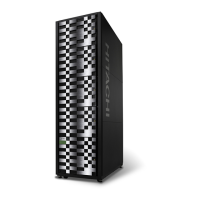
